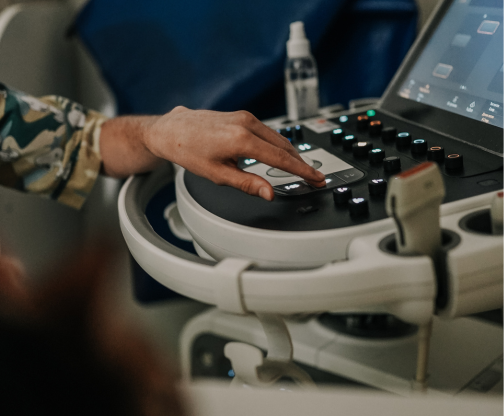Babesiosis (pyroplasmosis)
Опубліковано
30.05.2022
Babesiosis
Babesiosis (also called pyroplasmosis) is a vector-borne blood-borne disease. This is an infection with intracellular parasites - babesia, which enter the dog's bloodstream when a tick bites with its saliva.
Ticks themselves are found mainly in the grass, not only in forest areas, but also in city parks and squares.
Babesiosis is considered a seasonal disease. After warming, ticks become more active, but infection can occur at any time of the year.
Babesia is dangerous because it affects and destroys red blood cells. The main function of red blood cells is to carry oxygen from the lungs to the tissues and carbon dioxide from the tissues to the lungs. Anemia occurs (insufficient number of red blood cells in the blood), vital organs are affected, especially the kidneys and liver
The incubation period from the moment of the bite to the onset of the first clinical symptoms lasts from several days to two weeks.
The first symptoms of babesiosis are as follows
- significantly reduced or absent appetite
- weakness
- sometimes vomiting, diarrhea
- fever up to 40° and above
- weakness of the hind limbs
In more severe cases
- concentrated color of urine, up to red-brown
- pale or yellow mucous membranes
- shortness of breath
- severe general condition
Diagnosis of babesiosis includes
- a smear for babesiosis from the peripheral capillary vessels of the auricle in our laboratory, the result is obtained in 10 minutes
- PCR test for babesiosis (more often used to diagnose chronic babesiosis
- the presence of clinical signs.
Babesiosis is treated depending on the severity of the disease.
In the early stages of the disease, outpatient treatment is often sufficient. Which may take several days
After confirmation of the diagnosis, the animal is administered antiprotozoal and symptomatic drugs. The course of the disease and early prevention of complications are monitored by the doctor through blood tests.
In severe cases, inpatient treatment in the intensive care unit may be required, and sometimes transfusion of whole blood or red blood cells may be necessary.
There is no treatment at home.
Prevention of babesiosis includes regular treatment of dogs with drugs to protect against ticks. Treatment should be started in advance, before the temperature warms up, and preferably all year round.
To protect dogs, you can use drops on the withers (Advantix, Fiprist, Frontline, Frontline combo) - drops on the withers start working in 12 hours and continue to work for 28 days or oral tablets (Simparika 5 weeks, Bravecto 12 weeks or Nexgard/Nexgard Spectrum 4 weeks also works against heartworm and prevents heartworm infection), tablets are especially suitable for dogs that bathe regularly. The advantage of the tablets is that they start working in 2 hours. It is necessary to strictly follow the instructions for the drug and select drugs strictly according to the weight of the dog.
It is better to combine the main treatment with antiparasitic collars (usually they start working in a week or aerosols work almost immediately but not for long. The dog should be checked every day for ticks on the body.
If you notice a tick on the dog's body, it must be removed properly - unscrew it clockwise or counterclockwise. It is better to use special tweezers that are sold in veterinary clinics and pet stores.
When you have removed the tick, check that it is completely removed. Treat the bite site with an antiseptic (e.g., chlorhexidine), as a local reaction may occur.
Be sure to consult a doctor!
Схожі статті

Preparation for ultrasound examination (ultrasound)
It is important to remember that proper preparation of the animal can significantly facilitate the abdominal ultrasound process. By performing this procedure, the doctor can detect possible problems in time and provide proper treatment. High-tech ultrasound is one of the ways to quickly and informatively diagnose and ensure a long and healthy life for our pets.

Brachycephalic syndrome in dogs and cats.
What exactly is brachycephalic syndrome and how to live with it, how to prevent complications for the body that this syndrome can lead to?

WHY ARE DOCTORS NOT ALL-POWERFUL?
A good doctor is worth its weight in gold. Everyone understands this and can spend years looking for the best one, and when they find one, they will expect miracles.

Allergy
Allergy

SYNDROME OF TIRED TANKLES IN CATS
Tired antennae of a cat or What do you know about fatigue?

Bacterial myocarditis
This disease is extremely rare in dogs. In cats, it is even less common - 0.006-0.018% of cases.

How to protect home lovers from radiation damage.
In recent days, we have received many calls asking for advice on the need to protect animals during a possible radiation exposure.

STERILIZATION AND CASTRATION OF CATS AND DOGS
Such operations do not affect the change of the animal's character. They can be done from an early age, in particular from 8 weeks. Convenience, first of all for the animal, is that the young organism has the ability

Side effects of antiparasitic drugs
The need for tick and flea treatments for pets is a well-known fact.

How you can help calm cats and reduce stress today
the head of the felinology department, tells us.

